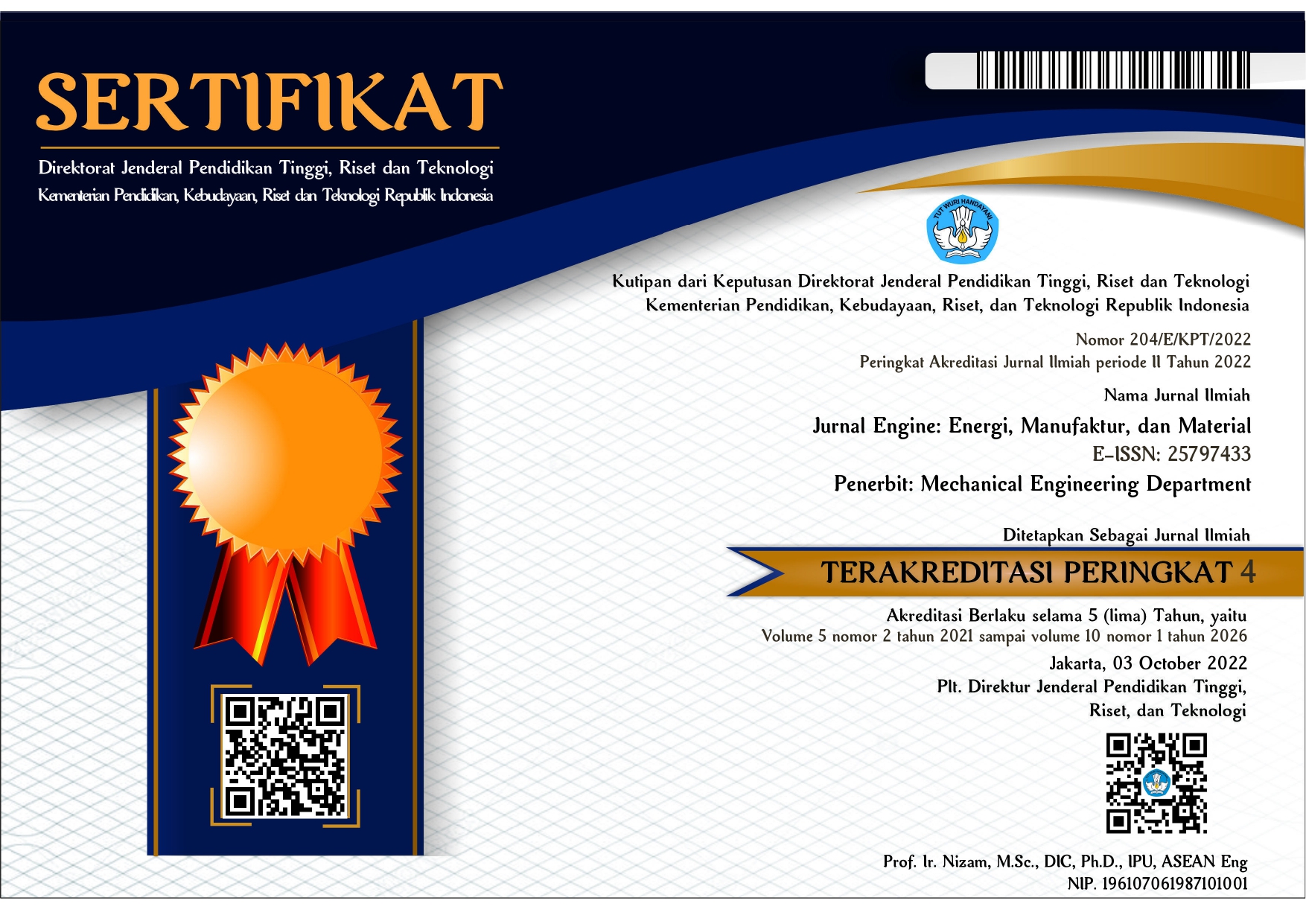Reducing the Threat of Electrical Hazards through the Application of Solar Energy: Realizing Child-Friendly Electricity in Elementary Schools.
DOI:
https://doi.org/10.30588/jeemm.v7i2.1529Keywords:
child-friendly, electrical, solar, energy, safeAbstract
The advancement of information technology provides ease of learning. However, learning media in schools usually depends on average electrical settings and electronic devices to support information technology (IT). The learning media in Indonesia generally depends on the utilization of PLN's electrical energy. It is undeniable that electricity is a basic need in teaching and learning activities today, even though the existence of electrical installations in the midst of children saves dangers that need to be anticipated. The solution is to provide socialization and education on child-friendly technology. In this case, the school community will be introduced to utilizing and building safe electrical installations for children. In principle, some electrical components available on the market will have their own level of safety, and safe and child-friendly components must be chosen. Furthermore, electrical installations will be built with solar energy sources because the technology has many advantages, including renewable energy, without high-voltage cable networks, and providing efficiency in school operational costs. It is more important that solar electricity can work at low voltages to be safe in children's environments. The result at the activity location installed electricity from Solar Power Plant with a 300 Watt inverter to provide electricity for school computer devices. In addition, 10 outdoor lighting points are installed that are set to turn on and off automatically. The main goal to provide efficient and safe electrical facilities for children has been well realized.
References
Eiser. C., Patterson, D.,Eiser, J. R., Children’s knowledge of health and illness: implications for health education. Child: Care, Health and Development, 9(5), 285–292. (1983).
Novrikasari, C. Anita, Yeni., Pembinaan Siswa Sekolah Dasar Dalam Keselamatan Listrik Di Kecamatan Kayuagung. Jurnal Pengabdian Sriwijaya, 6(2), 540–549. (2018).
Saputra, W. G., Rivai, A. M., Su’udah, M., Wulandari, G. L. S., Dewi, R. T., & Fitroh., Pengaruhteknologi Informasi Terhadap Kecerdasan (Intelektual, Spiritual, Emosional Dan Sosial) Studi Kasus: Anak-Anak. Studia Informatika: Jurnal Sistem Informasi, 10(2), 77–88. (2017).
M. S. Agnes, K. Yohan, W. S. James, S. Ermida., Apa yang Diketahui Anak-anak Sekolah Dasar tentang Keselamatan Dirinya: Studi Pendahuluan tentang Pemahaman akan Keselamatan Diri. IHSAN, 7(3), 226–249. (2005).
I. W. G. A. Anggara, I. N. S. Kumara, I. A. D. Giriantari, Studi Terhadap Unjuk Kerja Pembangkit Listrik Tenaga Surya 1,9 Kw Di Universitas Udayana Bukit Jimbaran. SPEKTRUM, 1(1), 118–122. (2014).
Presidential Regulation (Perpres) Number 47 of 2017 concerning “Penyediaan Lampu Tenaga Surya Hemat Energi (LTSHE)” (2017).
http://ditjenppi.menlhk.go.id/kcpi/index.php/aksi/mitigasi/implementasi/319-lampu-tenaga-surya-hemat-energi-ltshe, (n.d.). Retrieved November 20 (2022).
H. Rinna, N. Q. Muchamad. W. H. Aas, Konsep Fotovoltaik Terintegrasi On Grid dengan Gedung STT-PLN. Energi Dan Kelistrikan , 11(1), 17–26. (2019).
S. Zainal, I. Kashif, T. Hamed, An improved two-diode photovoltaic (PV) model for PV system. 2010 Joint International Conference on Power Electronics, Drives and Energy Systems & 2010 Power India, 1–5 (2010).
M. J. Jayme, S. F. J. Ronaldo, P. C. L. da C. JoaoPulo, A. M. M. Marco, A. S. Rafael, T. de S. J. Rafael, Energy Harvesting Photovoltaic System to Charge a Cell Phone in Indoor Environments. ICCMREA (2014).
A. N. Rismanto, F. Muchammad, Y. yuningtyastuti, Memaksimalkan Daya Keluaran Sel Surya Dengan Menggunakan Cermin Pemantul Sinar Matahari (Reflector). TRANSIENT, 3(3), 408–414 (2014).
M. Rifany (n.d.), Pengaruh Intensitas Cahaya terhadap Efisiensi Sel Solar pada Mono-Crystalline Silikon Sel Solar, in Https://Adoc.Tips/Pengaruh-Intensitas-Cahayaterhadap-Efisiensi-Sel-Solar-Pada.Html. Retrieved November 20 (2022)
R. U. Priska, W. Widyastuti, W. Mariza, Analisa Perhitungan Pembangkit Listrik Tenaga Surya Untuk Taman Markisa Di Wilayah Rt 01/ Rw 08 Kelurahan Mampang, Pancoran Mas, Kota Depok. JAMMU, 1(2), 42–49. (2022).
E. Hamzah, S. David, A. Atmam, Web Based Raspberry Monitoring System Solar Energy Power Plant, In IOP Conference Series: Earth and Environmental Science, 469(1), 012051. (2020).
S. Prih, Y. Sofian, M. Ali., Teknik Pemanfaatan Tenaga Listrik. Direktorat Pembinaan Sekolah Menengah Kejuruan Direktorat Jenderal Manajemen Pendidikan Dasar dan Menengah Departemen Pendidikan Nasional. (2008).
N. Luthfatun., Pemanfaatan Teknologi Dalam Pendidikan Anak Usia Dini. ThufuLA: Jurnal Inovasi Pendidikan Guru Raudhatul Athfal, 8(1), 001. (2020).
Downloads
Published
How to Cite
Issue
Section
License
Authors who publish with Jurnal Engine: Energi, Manufaktur, dan Material agree to the following terms:
Authors retain copyright and grant the Jurnal Engine: Energi, Manufaktur, dan Material right of first publication with the work simultaneously licensed under a Creative Commons Attribution 4.0 International License that allows others to share (copy and redistribute the material in any medium or format) and adapt (remix, transform, and build upon the material) the work for any purpose, even commercially with an acknowledgment of the work's authorship and initial publication in Jurnal Engine: Energi, Manufaktur, dan Material. Authors are able to enter into separate, additional contractual arrangements for the non-exclusive distribution of the journal's published version of the work (e.g., post it to an institutional repository or publish it in a book), with an acknowledgment of its initial publication in Jurnal Engine: Energi, Manufaktur, dan Material. Authors are permitted and encouraged to post their work online (e.g., in institutional repositories or on their website) prior to and during the submission process, as it can lead to productive exchanges, as well as earlier and greater citation of published work (See The Effect of Open Access).


















